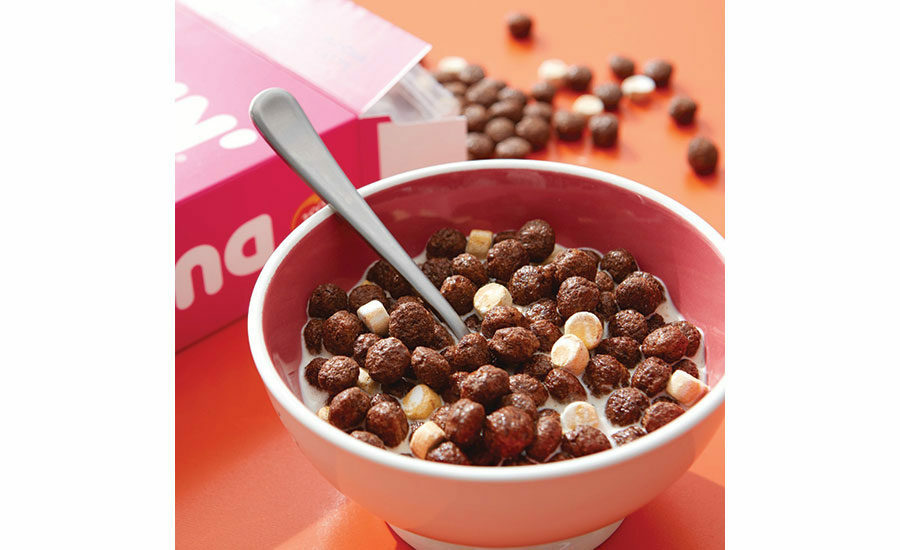Comfort with a Twist
It's time to rethink and perhaps reshuffle the attributes that make products craveable

Post Consumer Brands and Dunkin' brewed up two new cereals made with Dunkin' coffee. The new cereals Dunkin' Caramel Macchiato and Mocha Latte mark the first collaboration between the two corporations.
PHOTO COURTESY OF: Post Consumer Brands
Every industry has their terms that become horribly overused. This can happen in an incredibly short period of time; think “pivot” or “new normal” during the last pivot months. For food, I think it’s safe to say “comfort with a twist” has been used to the point where it has little real meaning in marketing or innovation discussions.
But the idea behind comfort with a twist—taking something incredibly familiar or commonplace and creating a new, unexpected experience with it—is a solid one. This is particularly true now as consumers have, for the most part, retrenched to comfortable items that require little thought and less challenge to make, source and enjoy. What is another way to consider this idea?
Let’s stop thinking of the idea of comfort as the driving force. Really, it’s familiarity. True, familiarity is generally comfortable but not everything that’s familiar creates the same cozy, satiated feeling that’s typically associated with comfort food.
Rather than “comfort food” being the impetus for innovation, think of these familiar items as a framework that guides and provides structure for the innovation. Consider any item that may fit your product portfolio: meatloaf, club sandwiches, mac & cheese, milkshakes. Now, let’s break apart their individual components to understand the structure.
What, for instance, is a milkshake at the core of that concept? Here are the related questions: How binding are those elements, or can the concept be broken down further? Then, how do you start innovating and building the concept up around that framework?
What might formally have been known as “comfort with a twist,” which can become stifling and difficult to engage with given its diluted impact through overuse, may actually be something entirely new in a space that’s ownable but with a framework that will facilitate trial among consumers.
This is an exercise restaurant operators have to be going through now, and their experience can help drive retail innovation. Some of this re-engineering of favorite items may be driven by the rise in delivery and the need to ensure items travel well without any (or limited) degradation of quality in transit. In other cases, reviving standards on the menu may be driven by the need to escape a crowded competitive playing field and create more “ownable,” competitive positions.
For the retail environment, the idea of “comfort with a twist” may take a completely different path. Rather than tearing an item down to the base framework and building it back up, the idea can be to take the most ubiquitous of items and rethink how they may be enjoyed from an occasion, format, and category point of view.
A great example of this work now involves Dunkin’. As with many operators, Dunkin’ is navigating a challenging and even more complex industry than was the case before the pandemic. Shifting consumer behavior, lockdowns and reopening limitations, and supply challenges are—as with so many other operators both within their segment and beyond it—forcing the chain to rethink how to bring its iconic products to consumers.
In Dunkin’s case that means identifying strong categories in retail that can be reimagined and re-engineered to incorporate its key products: donuts and coffee. Enter Dunkin’s recent introductions of cereal and beer products. Arguably, both are twisted familiar. However neither falls into the trap of simply adding a unique element to create something slightly or largely new.
Without direct involvement in the ideation sessions that led to either product, I can’t say for sure how the process started. Nevertheless, both show a willingness to strip the items down to their most basic elements or guardrails and allow for a rebuilding into something new.
If the pandemic has taught both the foodservice and restaurant industry anything—it’s that now is the time for truly bold innovation. Boldness may not mean pushing the boundaries to the far reaches of ingredient and format, but it does mean rethinking how we approach innovation and how no idea should be out of bounds.
Though a framework can help guide innovation, now is not the time for saying “We’d never do that,” “That could never work,” or “That’s never been done.” It’s time to stop being stuck by unnecessary limitations and time to start pushing the boundaries to better product each industry from future crises.